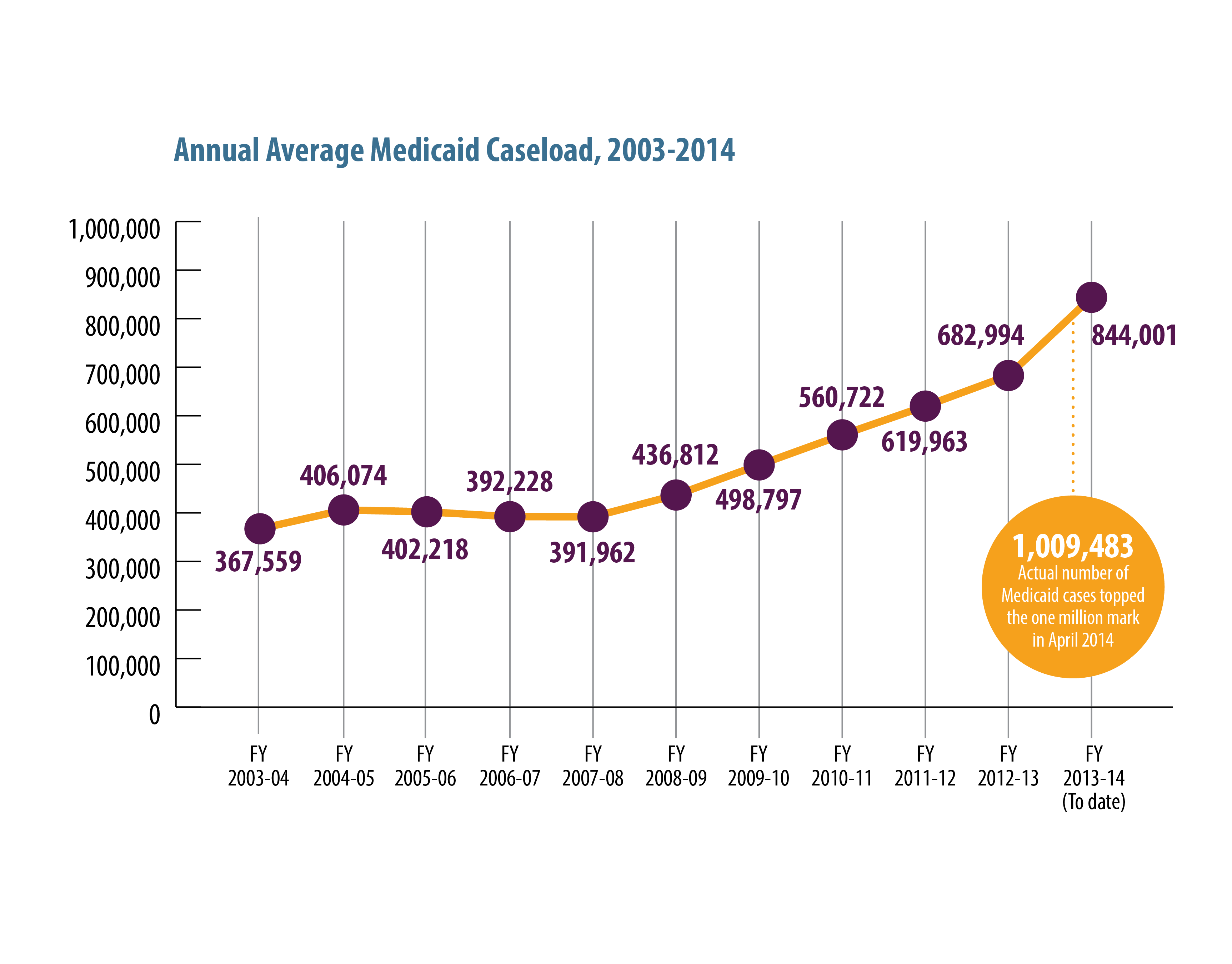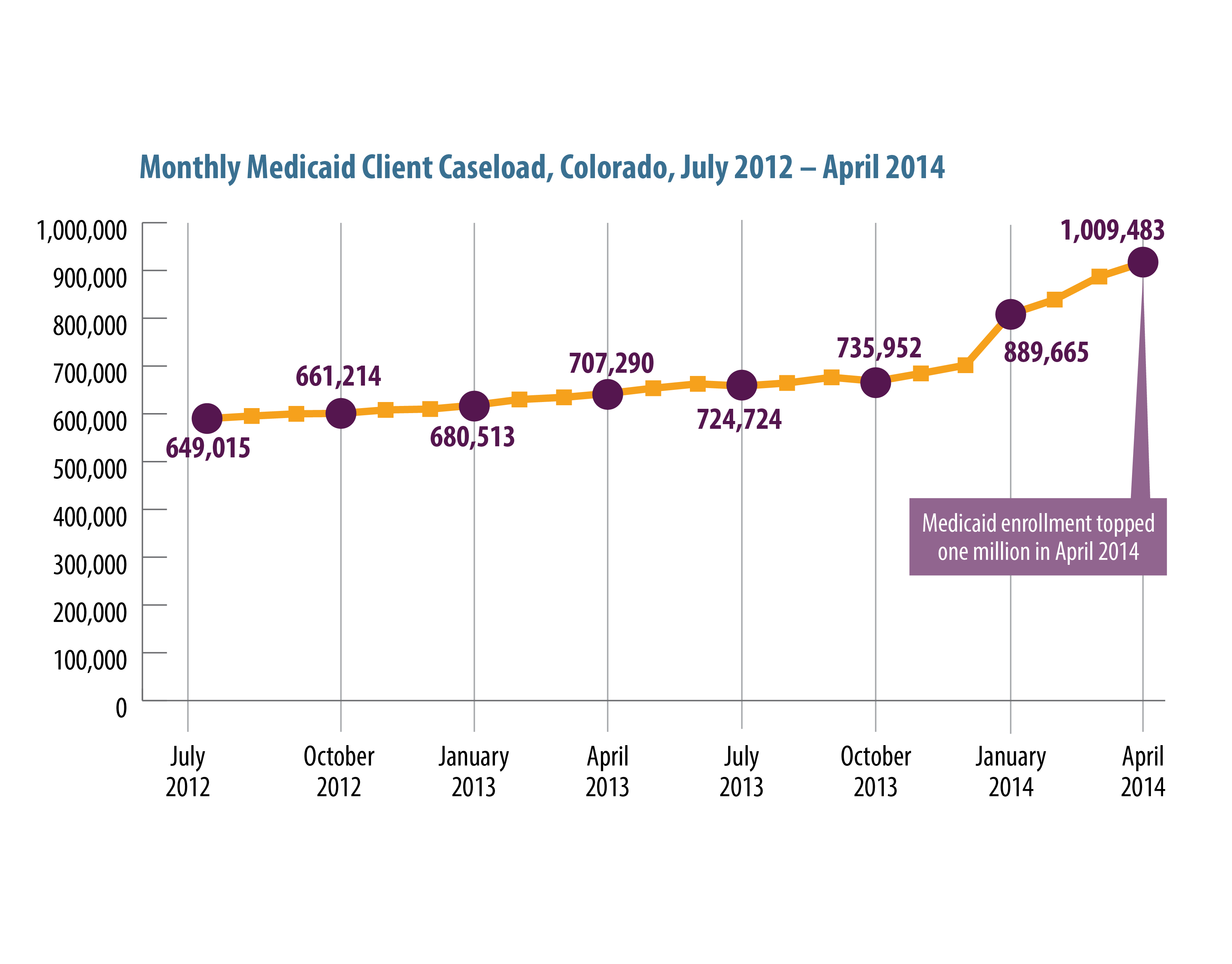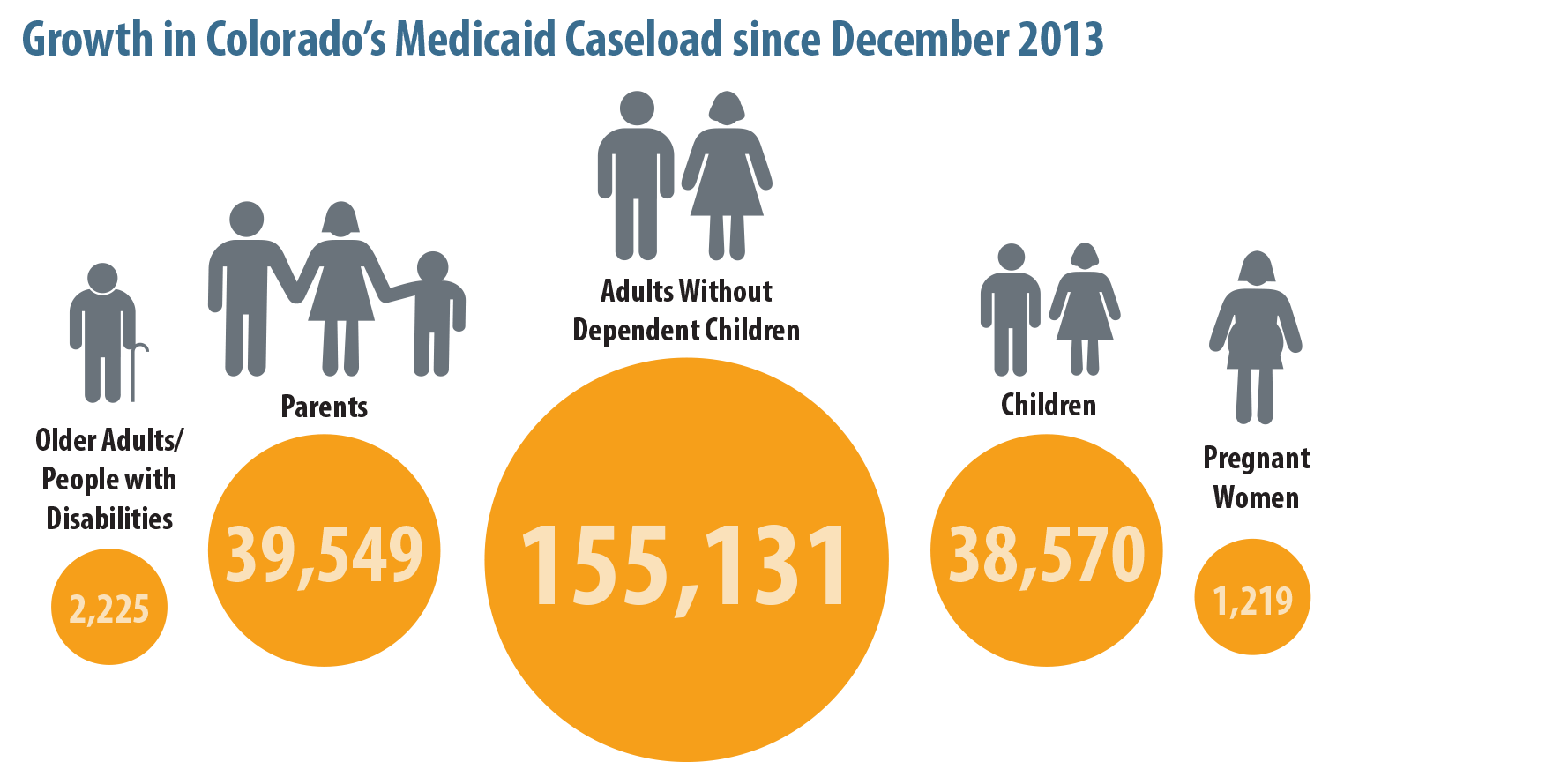A Million People: Colorado Hits a Medicaid Milestone
A million people. That’s almost one of every five people who live in Colorado. It’s enough to fill Sports Authority Field 13 times and Coors Field almost 20 times. It’s the combined populations of Denver and Aurora.
And it’s the number of Coloradans who are now enrolled in Medicaid.
Colorado expanded eligibility for Medicaid in January as authorized by the federal Affordable Care Act. Prior to expansion, eligibility was based on various income thresholds for seniors, people with disabilities, children, pregnant women, parents and a limited number of adults without dependent children. After expansion, eligibility was increased to 138 percent of the federal poverty level for all Coloradans who meet documentation requirements.
Medicaid enrollment topped one million in April, according to the Colorado Department of Health Care Policy and Financing, the state agency that administers the Medicaid program. In the first four months of implementation, enrollment in Colorado climbed more than 30 percent - from nearly 772,000 Coloradans to more than one million. It’s important to note that some of these new clients were eligible prior to the Medicaid expansion. Many of them likely learned about Medicaid from media coverage regarding the Affordable Care Act and the expansion of the program in Colorado.


Two-thirds of this growth has been driven by adults without dependent children, the population cohort most likely not to have been eligible for Medicaid before the expansion. At the same time, low-income parents have accounted for 17 percent of the growth and low-income children have accounted for 16 percent of the increase.
Medicaid enrollment changes on a monthly basis. While children have continuous eligibility for one year, eligibility for parents and adults without dependent children is made on a monthly basis.

First comes health insurance coverage. Then comes access to health care.
Analyses by the Colorado Health Institute indicate that even prior to the Medicaid expansion, Coloradans in the program experienced challenges to accessing care. For example, the 2013 Colorado Health Access Survey shows that 19.8 percent of Medicaid clients indicated that they were told by a doctor’s office or clinic that they weren’t accepting patients with their insurance. This compares to 5.5 percent of Coloradans with private coverage.
In addition, a report that we issued in February, Colorado’s Primary Care Workforce: A Study of Regional Disparities, indicated that a number of regions of the state did not meet the benchmark of 1,500 enrollees for each full-time Medicaid primary care physician. Areas where the supply needs to increase significantly to meet anticipated demand, in percentage terms, include eastern Colorado and El Paso, Adams, Denver and Arapahoe counties.
As Medicaid expansion states experience significant enrollment growth, they continue to strategize about the best way to increase their Medicaid provider networks. Medicaid rates are often cited as a barrier to providers participating in the Medicaid program. The Colorado General Assembly recently incorporated a Medicaid provider rate increase in the FY 2014-15 budget.
One of our ongoing research questions here at the Colorado Health Institute will relate to whether those rate hikes succeed in increasing provider participation and access to services.
